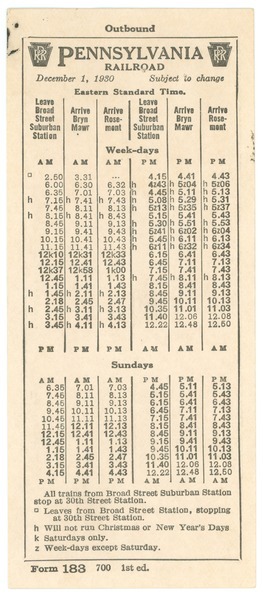Traveling by Train
Segregation by Train
Segregation has a long history in the railroad and other forms of public transportation (buses, streetcars), starting from its very beginning in Plessy v. Ferguson. A 1910 article from the Yale Law Journal expressed the rationale for segregation: that the separation of races, while expensive for the train carriers, was economically and socially justified for its aversion of racial violence.1
Public forms of transportation were often sectioned into segregated “white” and “colored” areas, and African Americans could be arrested for occupying the wrong "space." Boycotts around public forms of transportation were held: against the Virginia Passenger and Power Company in 1904, against two private Manhattan bus lines in 1941, and through the 1955 Montgomery Bus Boycott and the 1956 Tallahassee Boycott. A case notable for its relevance to this exhibit is the 1955 Sarah Keys v. Caroline Coach Company, which concluded with the only explicit rejection of Plessy v. Ferguson by a court or federal administrative body, and established that interstate bus travel could not be segregated.2 There was a distinction in many states between intrastate and interstate rail lines: intrastate rails were subject to the state’s laws, while interstate rails were the purveyance of the federal government. In 1910, Congress had not yet made a decision on interstate travel, which meant that a rail line’s segregation was determined by the carrier itself.3 Travelers crossing into or out of the American South would sometimes have to switch between segregated and integrated cars.4
Students traveling to the conferences would likely have encountered segregated trains, especially if traveling through southern states such as Virginia, as students from Virginia State University and Hampton University would have. Railroads in Virginia became fully segregated in 1900, and it was not until 1946 that even interstate railroads became integrated.5
On segregated rail lines, Black travelers would be relegated not only to separate train cars, but also to separate waiting rooms, bathrooms, drinking fountains, and concession stands (should they exist).6 Although segregation operated on a purported reasoning of “separate but equal,” Black rail cars were dirty and without water, luggage racks, or heat.7
We can hypothesize that Black students arriving from West Virginia State University in 1924 may have traveled on segregated Virginian cars for some hundreds of miles, and would have made a switch to integrated cars when crossing into the northeast. Attendees traveling southward, such as W.E.B. Du Bois from New York City, would likely have had a more integrated experience.
As the preceding information about automobile travel indicates, students traveling to the conferences would have likely preferred making the journey by train. Trains were not only relatively standardized and straightforward, but they eliminated the many individual choices in determining directions--you had only to board a train from New York City to Philadelphia, and you would arrive there. Trains connected most cities and were more affordable than private transport by car. The manual labor that was devoted to the construction of train stations and train lines also meant that they were less likely to be replaced over the last century, and so it is easier to track possible travel routes. The detailed travel routes that appear on the custom maps only use train stations that were in existence prior to 1924 and 1931 respectively and that are now connected. But there are always further complications to consider, beyond this project's scope: a century ago, were these stations connected by these same rail lines? Were the express trains from one city to another offered? Were there other stations on the route?
1. Baker, J. Newton, "The Segregation of White and Colored Passengers on Interstate Trains," The Yale Law Journal, Vol. 19, No. 6 (April 1910), pp. 445. ↩
2. Hipkins, Julian III and David Busch, "Transportation Protests: 1841 to 1992," Civil Rights Teaching. ↩
3. Baker, J. Newton, "The Segregation of White and Colored Passengers on Interstate Trains," The Yale Law Journal, Vol. 19, No. 6 (April 1910), pp. 447-448. ↩
4. Palmer, Alex, "This Segregated Railway Car Offers a Visceral Reminder of the Jim Crow Era," Smithsonian Magazine (June 30, 2016). ↩
5. Wynes, Charles E., "The Evolution of Jim Crow Laws in Twentieth Century Virginia," Phylon, Vol. 28, No. 4 (4th Qtr., 1967), pp. 417-423. ↩
6. Sugrue, Thomas H., "Driving While Black: The Car and Race Relations in Modern America," Automobile in American Life and Society. ↩
7. "'No Heat, No Water . . . and a Large Sign Reading "Colored"': Inequality in 'Separate but Equal' Railroad Accommodations," History Matters, American Social History Productions, Inc. ↩


